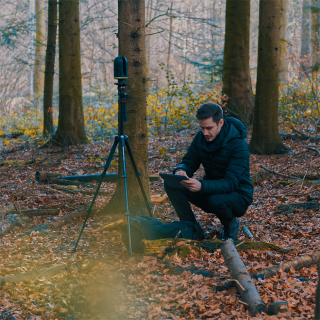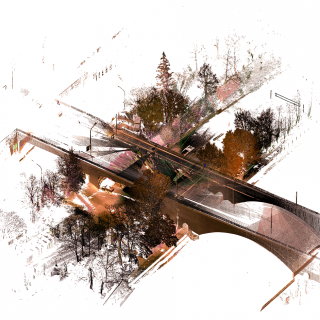How does spatial information influence the behaviour of a machine and why is it essential for humans to understand this process?
Due to fast technological developments, the knowledge gap between users and developers continues to grow. However, to stimulate an inclusive debate about ethical rules for the usage of machinery and its consequences on everyone's life, it is crucial to understand how machines work. To that goal, this thesis illustrates the interface between machine perception and human visual understanding. Through experiments in the fields of spatial computing, data processing, and information embodiment, a compilation of hardware and software was created to translate machine perception into visualisations. The project offers a model for other designers who also endeavour to generate awareness for this important topic.
We are increasingly surrounded by technical systems with sophisticated perceptional faculties. Especially in terms of visual perception, systems are on the rise which appear to be able to see their surroundings, such as self-driving cars. But what does «seeing» actually look like in connection with machines? Harun Farocki’s films Eye/Machine I-III pick up on the aesthetics of machine imagery – there are overlaid arrows and contours which help the machines to orientate themselves but would not necessarily have to be images in the human visual sense. They are therefore «operational images», as PaulVirilio called them, in other words: images which have been created for humans to interact with machines, but which do not depict what machines «see».
In his thesis «Deep Vision», Florian Bruggisser has taken up this topic and, using a LiDAR scanner, captured environments in the form of point clouds. Again, these are not images in the traditional two-dimensional sense, but three-dimensional depictions which can be looked at from all angles. Whereas humans can view the world only from one perspective, i.e. in a two-dimensional way, machines can view it three-dimensionally, from several different perspectives at once. In his dissertation he illustrates this perceptional difference in visual and spatial form.


